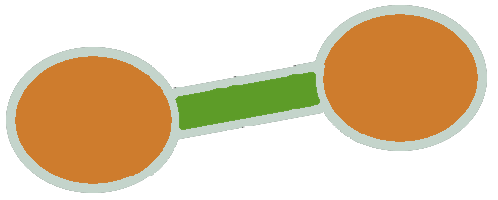Ninatoka
 condition
conditionPathogen associated molecular pattern (PAMP)
Pathogen-associated molecular patterns (PAMPs) are small molecular motifs conserved within a class of microbes. They are recognized by toll-like receptors (TLRs) and other pattern recognition receptors (PRRs) in both plants and animals. A vast array of different types of molecules can serve as PAMPs, including glycans and glycoconjugates.[1] PAMPs activate innate immune responses, protecting the host from infection, by identifying some conserved nonself molecules. Bacterial lipopolysaccharides (LPSs), endotoxins found on the cell membranes of gram-negative bacteria,[2] are considered to be the prototypical class of PAMPs. LPSs are specifically recognised by TLR4, a recognition receptor of the innate immune system. Other PAMPs include bacterial flagellin (recognized by TLR5), lipoteichoic acid from gram-positive bacteria (recognized by TLR2),[3] peptidoglycan (recognized by TLR2),[3] and nucleic acid variants normally associated with viruses, such as double-stranded RNA (dsRNA), recognized by TLR3 or unmethylated CpG motifs, recognized by TLR9.[4] Although the term "PAMP" is relatively new, the concept that molecules derived from microbes must be detected by receptors from multicellular organisms has been held for many decades, and references to an "endotoxin receptor" are found in much of the older literature. The recognition of PAMPs by the PRRs triggers activation of several signaling cascades in the host immune cells like the stimulation of interferons (IFNs)[5] or other cytokines.[6]
Ref: https://en.m.wikipedia.org/wiki/Pathogen-associated_molecular_pattern
Join Ninatoka!!
NinatoKa's goal is to support you as a therapist in unravelling the illness pathway from symptoms to cause, and to help you detect potential interventions.
Go to Explore to start your discovery!
Go to Learn to scroll through newly added data.
Go to Contribute to contribute to the Ninatoka database.
You can rate content up or down and add comments if you agree or disagree.



